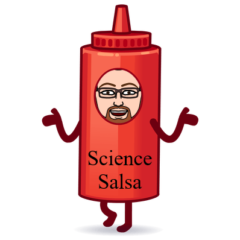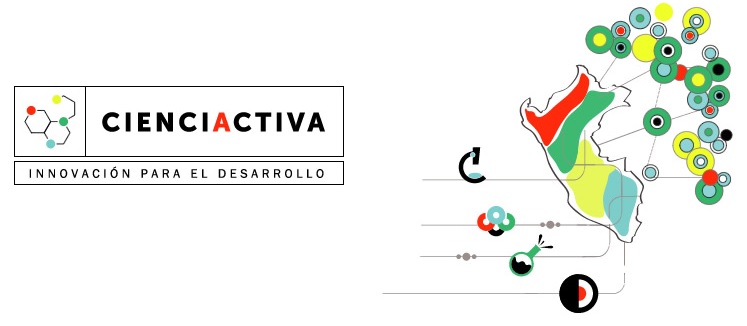A list of what you thought it was worth to click on the link
It is that time of the year when we look back to find the most important past events and gain some insight from them. This list has the links that my Twitter audiences found most interesting from March 2013 to December 2013.
Year 2013 on Twitter
About the list: I have shared over a thousand links on Twitter, a lot of them never get opened, but some of the links get big responses just because they are re-tweeted by users with audiences in the tens of thousands, or because they are well tuned to the interests of the people who follows me on Twitter. I used BitLy to find the 10 most popular links of 2013, here you have the list starting with number ten and ending with number 1, the most opened link of 2013!
#10 Vote for University of Washington’s Engage Science Seminar Series!
Sometimes when you ask people to help you advertise a cause, they help you a lot. Engage Science is a student-run seminar that helps young scientists improve their communication skills. Engage was participating in the NSF Graduate Education Challenge and needed votes to have their proposal funded. Thank for the re-tweets and for the people who clicked the link to find how to vote for Engage (Total of 19 clicks).
Recently, the NSF put out a call for innovative ideas to improve graduate education. We submitted a proposal to get programs like Engage/…
#9 EPA profiles of Latinos (En Español)
Evelyn Rivera-Ocasio | EPA en español | US EPA
EPA-Región 2 División de Protección Ambiental del Caribe San Juan, Puerto Rico ¿Dónde nació? Evelyn Rivera-Ocasio: Bayamón, Puerto Rico ¿…
#8 News from Perú investing in Science
Perú tripled its investment in science and innovation this year, and CONCYTEC started an aggressive campaign to promote science education and research in the country. This is a link to a LatinAmericanScience.org English translation of a short post I wrote in Spanish for my SalsaDeCiencia blog (Total of 19 clicks)
Peru’s national council of science, technology, and technological innovation (CONCYTEC) announced this week a plan to stimulate scientifi…
#7 Developing a National roadmap for communication training in STEM graduate programs
#GradSciComm: Developing a National roadmap for communication training in STEM graduate programs
There are times when reform is necessary. The very successful STEM graduate education programs in USA are now graduating a lot more PhDs,…
Ivan Fernando Gonzalez
#6 Diverse Science Writers
Blogger and scientist DNLee (@DNLee5) started a Twitter list of Diverse Science Writers, she crowd-sourced the names online, and a lot of people was interested on the list. Thank you for including me on it! (Total of 21 clicks).
#5 News from Perú investing in Science (En Español)
Perú tripled its investment in science and innovation this year.This is the link to the original SalsaDeCiencia.com blog post I wrote in Spanish (Total of 21 clicks).
Perú invierte en ciencia, investigación, y desarrollo
El consejo nacional de ciencia, tecnología, e innovación tecnológica del Perú (CONCYTEC) anunció esta semana un plan de estímulo a la inv…
#4 Science communication for Spanish-speaking audiences event
Thank you again for helping me promote this event last November in Seattle. We had a wonderful panel that shared their first-hand experience engaging Hispanics (Total of 44 clicks).
#16:: Engaging the Invisible Americans: Science communication for Spanish-speaking audiences
There is a huge American audience with a language of its own, have you heard of it? Hispanic Americans make up 17% of the population, and…
More about science communication in Spanish
If you are interested in Spanish-speaking audiences please check the following link for the event’s recap and video. It had a total of 119 clicks, but those didn’t come from my Twitter links, so it didn’t make it on this list.
Engaging the Invisible Americans: Science communication for Spanish-speaking audiences at #ScioSEA
They say you should know your audience… But can you really know your online audience? Especially one that does not speak your own langu…
#3 Two science communication training programs featured in newspapers last March
The Seattle Times featured Engage Science from University of Washington, and the Long Island Newsday featured the Center for Communicating Science of Stony Brook University (Total of 48 clicks).
Science communication training: raising the bar inside and outside academia
This week two newspapers featured school seminars that help graduate students communicate their science to general audiences. The Seattle…
#2 Proyecto Ciencia para todos (En Español)
“Ciencia para todos” showcases ongoing efforts to reach the massive Spanish-speaking audiences in the USA (and Globally). As part of this effort, I started a public opt-in list that may help science communicators match local Spanish-speaking communicators and a growing public Twitter list with more than 150 resources worldwide in Spanish. (Total of 131 clicks).
Additionally a total of 74 people click on the Twitter link for the form to opt-in on the list (and only half actually subscribed) and 65 people have consulted the Twitter link for the list already
Ciencia para todos El proyecto Ciencia Para Todos es en principio muy simple: busca ayudar a que los esfuerzos de la comunicación de la ciencia -que existen…
#1 Invited post, Scientists are Humans too
In the age of PowerPoint it is hard to remember that you are the presentation, not your slides. This invited blog post talks about my struggles as a scientist to give engaging presentations, and the lessons I learned during the Engage Science Seminar at University of Washington. Effective science communication training in academia is possible, Engage even includes a talk in front of Town Hall Seattle, a great public venue, but programs like it are still diamonds because they are difficult to find in the current graduate education landscape (Total of 148 clicks).
Student Post: Scientists are Humans Too Fernando Gonzalez is Colombian/Peruvian scientist living in Seattle, Washington. He also blogs at Science Salsa, a blog about science tha…
Thank you!
I want to thank you for sharing those links and for reading them. The year 2013 doubled the number of people following my accounts on Twitter (@gonzalezivanf in English and @salsadeciencia in Spanish) and I like to believe it is because you found the content pleasant and useful. It has been a little over a year since I started learning how to become an effective science communicator, thank you for coming along with me and helping me grow, thank you for your patience and your support.
Have a wonderful 2014 and I hope to keep enjoying the privilege of your company on Twitter!
About BitLy:
BitLy is a service that offers URL redirection with real-time link tracking. I have used BitLy on Twitter since March of 2013, and to this date it has helped me track the usage of over 1,000 links. I made this list of My Ten Most Popular Twitter Links of 2013 based on their statistics, selecting the links with the largest number of clicks. To visit my BitLy account please follow this link:
Ivan Fernando Gonzalez | Public Profile












